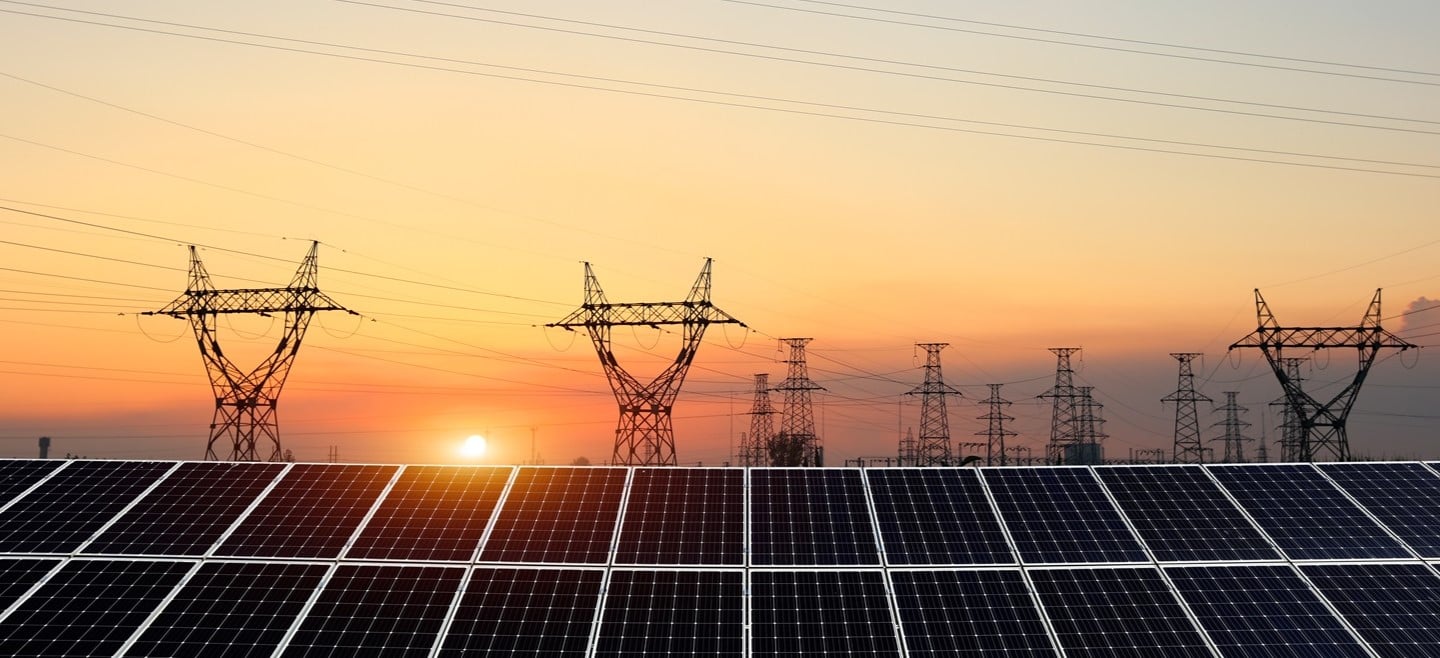-
Digital Natives
Unlock growth with Grant Thornton Bharat's Digital Natives solutions. Customised support for tech-driven companies in healthcare, gaming, and more.
-
Business Consulting
Our business consulting specialists offer a comprehensive blend of strategic advisory services. We assess the business, industry, operating model, synergy, skill sets and vision of the organisation and recommend the way forward
-
Digital Transformation Services
Grant Thornton’s digital transformation services help traditional businesses digitalise their business models with cloud technology, IoT consulting, app development and more DigiTech solutions.
-
Human Capital Consulting
Our Human Capital Consulting team harnesses technology and industry expertise to assist in constructing adaptable organisations with transparency, fostering productive and value-driven workforces, and inspiring employees to engage meaningfully in their tasks.
-
Production Linked Incentive Scheme
Production-linked Incentive Scheme by the Indian government is aimed at boosting manufacturing. Grant Thornton Bharat offers varied services across sectors to help businesses avail of this scheme.
-
Public Sector Advisory
Our Public Sector Advisory team has focused streams, aligned with the core priorities of the Government of India. We are responsible for providing innovative and customized technical and managerial solutions.
-
Tech Advisory
We have amalgamated Digital Transformation, IT Advisory & Information Management and Analytics into a new offering, DigiTech.
-
Direct Tax services
Our tax specialists offer a comprehensive blend of tax services, tax litigation, regulatory and compliance services, helping you navigate through complex business matters.
-
Indirect Tax Services
Get tax services by leading tax firm Grant Thornton India. Our indirect tax services include consulting, compliance and litigation services for corporate, international and transaction tax
-
Transfer pricing services
Our transfer pricing services experts provide a range of services from provision of APA services to handling large global assignments including Country by Country reporting.
-
US Tax
At Grant Thornton, we help individuals and dynamic companies deal with US tax laws, which are one of the most complicated tax legislations across the world.
-
Financial Services - Tax
Best financial advisory services, tailored for small and large businesses by the experts having comprehensive knowledge of domestic laws and access to multifaceted tools to provide a valuable results.
-
Financial Reporting consulting services
Our experts have significant hands-on experience in providing IFRS/US GAAP services, end-to-end solutions and support services to fulfil financial reporting requirements.
-
Fund accounting and financial reporting
International operations often lack standardisation and have varied local reporting formats and requirements. Our experts can offer proactive insights, practical guidance, and positive progress and help meet regulatory timeframes.
-
Compliance and Secretarial Services
Our experts can assist in overhauling the entire compliance machinery of the organisation through evaluation of the applicable statutory obligations, monitoring of adequate governance controls, reporting and providing ongoing support.
-
Global People Solutions
As businesses transcend borders, both domestic and global considerations need equal attention. Our interim CFO and financial controller support services help organisations meet the business vision.
-
Finance and accounting outsourcing
Our accounting experts assist organisations in managing their accounting and reporting. Our dedicated Integrated Knowledge and Capability Centre (IKCC), allows us to service both the domestic and global markets efficiently and cost-effectively
-
Compliance Management System
We have automation solutions for you that will allow meeting government requirements and remain diligent, which when failed, can lead to penalties and loss in revenue.
-
IKCC: Grant Thornton's Shared Service Centre
The India Knowledge and Capability Centre (IKCC), aimed at delivering solutions by developing capabilities, has completed four years of its journey.
-
Global compliance and reporting solutions
At Grant Thornton Bharat, we meet the challenges of our clients and help them unlock their potential for growth. Our professionals offer solutions tailored to meet our clients’ global accounting and statutory reporting requirements. With first-hand experience of local reporting requirements in more than 145+ locations worldwide, we provide seamless and consistent international service delivery through a single point of contact.
-
Related Party Transactions Governance
Grant Thornton Bharat's comprehensive related-party transaction services ensure good governance by adhering to regulatory requirements, promoting transparency, and providing robust policies for compliance, documentation, and accountability in related-party transactions.
-
Family Offices & Private Client Services
Grant Thornton Bharat Private Client Services offers tailored advisory for family-owned businesses, focusing on governance, compliance, tax, succession planning, and family office structuring to sustain wealth and preserve legacies across generations.
-
GTMitra: Tax & Regulatory Tool
GTMitra, a specialised tax and regulatory tool by Grant Thornton Bharat, supports multinational businesses in understanding laws and regulations for effective growth strategies.
-
Labour codes
Labour codes solutions help you transition through the new legislation. At Grant Thornton, we help businesses divide their approach to make sure a smooth transition.
-
Alerts
At Grant Thornton India, with the help of our tax alerts, we help to provide updates on how to minimise your tax exposure and risks.
-
Unlocking opportunities: India investment roadmap
The India Investment Roadmap resource is designed to navigate the complexities of Indian tax and regulatory laws, providing seamless guidance and a comprehensive set of solutions to ensure a smooth process for investors aiming to establish or expand their presence in India.

-
Cyber
In today’s time, businesses have gone through large transformation initiatives such as adoption of digital technologies, transition to cloud, use of advanced technologies et al.
-
Governance, Risk & Operations
Our Governance, Risk and Operations (GRO) services encompass Internal Audit, Enterprise Risk Management, Internal Financial Controls, IT advisory, Standard Operating Procedures and other services.
-
Risk analytics
Grant Thornton Bharat’s CLEARR Insights is a state-of-the art data analytics platform that will help you in seamless data analysis and efficient decision-making.
-
Forensic & Investigation Services
The team of forensic advisory services experts consists of the best intelligence corporate experts, and fraud risk, computer forensic experts to deliver most effective solutions to dynamic Indian businesses.
-
ESG consulting
Grant Thornton Bharat offers holistic ESG consulting solutions for sustainable business outcomes. With industry expertise and AI technology, we drive long-term value.

-
Transaction Tax Services
Our transaction tax experts understand your business, anticipate your needs and come up with robust tax solutions that help you achieve business objectives ensuring compliance and efficiency
-
Deal Advisory
Unlike other M&A advisory firm in India, we offer deal advisory services and work exclusively with controlled and well-designed strategies to help businesses grow, expand and create value.
-
Due Diligence
Grant Thornton’s financial due diligence services are aimed at corporate looking for mergers and acquisitions, private equity firms evaluating investments and businesses/promoters considering sale/divestment.
-
Valuations
As one of the leading valuation consultants in India, Grant Thornton specializes in all the aspects of the process like business valuation services, financial reporting, tax issues, etc.
-
Overseas Listing
Overseas listing presents a perfect platform for mid-sized Indian companies with global ambitions. Grant Thornton’s team of experts in listings, work closely with clients during all stages.
-
Debt & Special Situations Solutions
Grant Thornton Bharat offers specialist debt and special situations consulting services, including restructuring, insolvency, and asset tracing solutions.
-
Financial Reporting Advisory Services
Grant Thornton Bharat Financial Reporting Advisory Services offer end-to-end solutions for complex financial requirements, including GAAP conversions, IPO support, and hedge accounting advisory, ensuring accurate financial reporting and compliance.
-
Financial Statement Audit and Attestation Services
Grant Thornton Bharat offers customised financial statement audit and attestation services, ensuring impeccable quality and compliance with global standards. Our partner-led approach, technical expertise, and market credibility ensure effective solutions for your business needs.

- Agriculture
- Asset management
- Automotive and EV
- Aviation
- Banking
- Education and ed-tech
- Energy & Renewables
- Engineering & industrial products
- FinTech
- FMCG & consumer goods
- Food processing
- Gaming
- Healthcare
- Urban infrastructure
- Insurance
- Media
- Medical devices
- Metals & Mining
- NBFC
- Pharma, bio tech & life sciences
- Real estate and REITs
- Retail & E-commerce
- Specialty chemicals
- Sports
- Technology
- Telecom
- Transportation & logistics
- Tourism & hospitality
-
 Thought leadership Co-lending in India: Expanding credit access for MSMEsIn today’s rapidly evolving financial landscape, co-lending has emerged as a key enabler of credit expansion in India, facilitating partnerships between banks and non-banking financial companies (NBFCs) to extend credit more efficiently to underserved segments.
Thought leadership Co-lending in India: Expanding credit access for MSMEsIn today’s rapidly evolving financial landscape, co-lending has emerged as a key enabler of credit expansion in India, facilitating partnerships between banks and non-banking financial companies (NBFCs) to extend credit more efficiently to underserved segments. -
 Article Why India’s financial inclusion journey needs to focus on equity and access to creditFinancial services have expanded over a decade, giving millions access to bank accounts and digital payments. But true empowerment needs to reach every corner of the country if growth is to be long-term and sustained
Article Why India’s financial inclusion journey needs to focus on equity and access to creditFinancial services have expanded over a decade, giving millions access to bank accounts and digital payments. But true empowerment needs to reach every corner of the country if growth is to be long-term and sustained -
 Thought Leadership Competitive and sustainable agriculture & food processing in KeralaThe economy of Kerala is primarily driven by the services sector, which contributes 66% to the Gross State Domestic Product (GSDP).
Thought Leadership Competitive and sustainable agriculture & food processing in KeralaThe economy of Kerala is primarily driven by the services sector, which contributes 66% to the Gross State Domestic Product (GSDP). -
 Article Economic Survey 2024-25: Deregulation, investment and innovation for a Viksit BharatIndia's economic growth remains for a steady trajectory with real GDP expected to grow at 6.4% in FY25 and in the range of 6.3%-6.8% in FY26, reflecting resilience despite global uncertainties.
Article Economic Survey 2024-25: Deregulation, investment and innovation for a Viksit BharatIndia's economic growth remains for a steady trajectory with real GDP expected to grow at 6.4% in FY25 and in the range of 6.3%-6.8% in FY26, reflecting resilience despite global uncertainties.
-
India-UK
India-UK

The Indian energy sector stands at the cusp of a transformative leap, driven by a robust policy framework and an ambitious vision for energy security, sustainability, and affordability. In the Financial budget announced for the year 2025-26, the Ministry of Power has been allocated INR 21,847 crores, up from INR 19,845 crores in 2024-25. Ministry of New and Renewable Energy sees a significant rise to INR 26,549 crores from INR 17,298 crores, reinforcing India’s commitment to substantial focus on green energy growth and sustainability. The recently unveiled budgetary allocations provide critical support for this transition, addressing key verticals including clean-tech manufacturing, nuclear energy expansion, financial stability of power utilities and critical minerals. These measures are poised to redefine the energy landscape, ensuring a resilient and self-reliant power sector for India.
Clean-Tech Manufacturing: Fostering Innovation, Technology, and Skills for Future Growth. To establish India as a global manufacturing hub in clean energy technologies, the government has launched a ‘National Manufacturing Mission’ with a strategic focus on solar PV cells, EV and grid scale batteries, wind turbines and electrolysers. This initiative is supported by significant budgetary increase including over 60% rise in solar energy funding to INR 24,100 crores (from INR 14,937 crores in FY25). A 100% increase in Green Hydrogen allocations to INR 600 crores (from INR 300 crores in FY25) and an 80% higher allocation to PM Surya Ghar to facilitate the installation of 5 million rooftop solar systems in FY26. This manufacturing push is set to generate nearly 3 million green jobs, strengthen India's position in solar exports under the ‘Make in India’ initiative, and enhance energy security by reducing import dependencies. Additionally, the reduction in Basic Customs Duty (BCD) on solar cells to 20% (earlier 25%) and on solar modules to 20% (earlier 40%) will improve affordability and market competitiveness, fostering a more robust clean energy ecosystem.
Nuclear Energy: A Mission to Deepen India’s Energy Capabilities
The Nuclear Energy Mission represents a pivotal stride toward India's clean energy transition, aiming to scale up nuclear power capacity from 8 GW in 2024 to 100 GW by 2047—a 12-fold increase over the next two decades. Recognising the need for technological innovation, the government has earmarked INR 20,000 crores for research and development in Small Modular Reactors (SMRs), with a target of developing at least five indigenous SMRs by 2033.
Despite a 3.5% reduction in the budgetary allocation for the Department of Atomic Energy (DAE) to INR 24,049 crores in FY26, the increased focus on SMRs, along with proposed amendments to the Atomic Energy Act and the Civil Liability for Nuclear Damage Act, is expected to encourage private sector participation. The shift in liability for nuclear accidents from equipment suppliers to nuclear plant operators is a crucial move that could attract global firms like GE-Hitachi and Westinghouse to invest in India's nuclear ecosystem.
The strategic benefits of nuclear power include a significant 0.097 metric tons of CO₂ emission reduction per hour when replacing thermal power, an investment potential of $169 billion, and over 110,000 direct employment opportunities from the installation of 100 GW of nuclear capacity. Additionally, nuclear energy is projected to be 15% more costeffective than solar plus battery storage systems ensuring affordable and reliable power for the country.
Bolstering the Financial and Operational Resilience of Power Utilities
One of the key takeaways from the budget is the continuation of the additional borrowing provision of 0.5% of the Gross State Domestic Product (GSDP) for states. This measure, initially introduced in 2021, aims to improve the operational and financial stability of power distribution companies (DISCOMs) and enhance the transmission infrastructure (InSTS).
With an estimated additional headroom of $16.09 billion, states can leverage these funds to address DISCOM losses, clear outstanding dues of $5.75 billion to generation companies (GENCOs) and expand transmission capacity by up to 70,000 circuit kilometers. Moreover, the Reforms-Linked Distribution Scheme has received a 26% increase in budgetary allocation, reaching INR 16,021 crores in FY26 from the INR 12,665 crores allocated in FY25. This enhanced funding will further reduce Aggregate Technical & Commercial (AT&C) losses and bridge the gap between Average Cost of Supply (ACS) and Average Revenue Realised (ARR), paving the way for a financially healthier distribution sector.
Critical Minerals and Domestic Battery Production: A Leap Towards Self-Sufficiency
India's transition to a clean energy economy hinge on access to critical minerals essential for manufacturing lithium-ion batteries, solar panels, and wind turbines. The budget has introduced 100% exemptions on Basic Customs Duty (BCD) for 25 critical minerals that are not available domestically, covering essential materials such as cobalt, lithium, zinc and lead.
Further, the Production-Linked Incentive (PLI) scheme for Advanced Chemistry Cell (ACC) battery storage has witnessed a significant boost with a 10 times increased allocation from INR 15.42 crores in FY25 to INR 155.76 crores in FY26. This substantial policy intervention is poised to drive transformational changes in the battery manufacturing ecosystem. The increased allocation is expected to lower EV battery manufacturing costs by 10-15% by reducing capital expenditure on imported machinery and technology thereby enhancing the competitiveness of domestically produced batteries. Additionally, this move will accelerate the development of large-scale battery manufacturing facilities, strengthening India's position as a global hub for energy storage solutions. Furthermore, the initiative will play a crucial role in boosting the domestic supply chain for battery production by facilitating the recovery of critical minerals from industrial tailings, ensuring sustainable resource utilisation, and reducing import dependence.
Powering Urban Sustainability: The Energy-Climate Imperative
India’s urban future hinges on energy efficiency and climate resilience. With the INR 1 lakh crore Urban Challenge Fund, cities now have the opportunity to modernise infrastructure with sustainable water, sanitation, and climate-friendly solutions. Smart energy systems, green buildings, and low-carbon transport must be at the core of urban transformation to cut emissions and enhance resilience. As climate risks intensify, this fund can be a game-changer in building cities that are not just livable but future-ready—where sustainability and efficiency drive economic growth and environmental security.
Conclusion: A Power-Packed Blueprint for the Future
The budgetary measures outlined for the energy sector reaffirm India’s commitment to financially stable utilities, clean energy expansion and a self-reliant manufacturing ecosystem. These policies lay the groundwork for achieving the nation’s ambitious energy goals while driving job creation, reducing carbon emissions, and ensuring affordable electricity for all. With zero tax liability on earnings up to INR 12 lakh (INR 12.75 lakh with standard deduction), middle-class taxpayers will have higher disposable income, potentially fueling demand for sustainable choices— energy-efficient appliances, solar rooftops, EVs and— driving grassroots climate action.
However, a notable miss in this year’s budget is the lack of emphasis on Carbon Capture, Utilisation, and Storage (CCUS), a critical technology in decarbonising industries and achieving long-term climate targets. Roadmap to utilise green hydrogen in ‘hard to abate’ industrial sectors starting with voluntary to mandatory use with ‘carrot and stick’ arrangement could have been more beneficial too. As India takes decisive steps towards a cleaner and more resilient energy sector, the overarching message is clear: strategic reforms, technological advancements, and fiscal prudence will define the country’s energy future.
This article was first published in The Economic Times on 7 February 2025.

